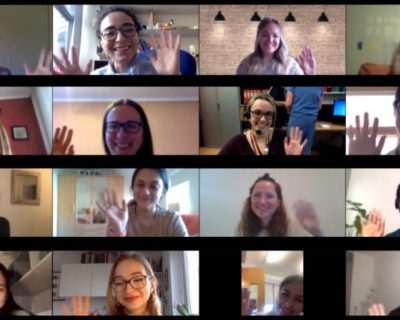Branch
Select your branch
Immunotherapy – hope for cancer patients?
As a haematologist, I treat patients with cancerous illnesses such as leukaemia and lymphoma as part of my job every day. Treatment generally consists of a blunderbuss approach: give toxic drugs that kill cells (chemotherapy) at a high enough dose to eradicate the cancer, but not too high such that there are unacceptable side effects. This empirical, rather unscientific approach has seen some great successes – childhood acute lymphoblastic leukaemia for example, has seen cure rates improve from 0% in the 1960s to close to 90% now. But I, like all doctors that look after cancer patients, am aware that there should be a better way. Seeing patients incapacitated by nausea, young women losing their hair and both men and women being rendered infertile as a side-effect of chemotherapy can be exceptionally distressing, both for patients and for the doctors that have poisoned them with the aim of curing their cancer. Moreover, the treatment sometimes doesn’t work meaning we have put the patients through a whole raft of side-effects for no benefit.
So what are the other ways of treating cancer apart from chemotherapy? Harnessing the power of the immune system to fight cancer, (immunotherapy) has been an aim of scientists and doctors for decades. In actual fact, immunotherapy is nothing new. When treating B cell lymphomas, I have always prescribed Rituximab alongside chemotherapy, a monoclonal antibody directed against B cells which improves survival rates by about 20%. And haematologists have been using the immune system to eradicate residual leukaemia since the 1960s using bone marrow transplants, even if they weren’t aware of it when they initially started performing such treatments. For the most part though, immunotherapy treatment proved disappointing in the 1990s and early part of this century.
Over the last five years however, there has been a revolution. Science magazine hailed immunotherapy as its scientific breakthrough of the year in 2013 based upon remarkable clinical trials and pre-clinical work, and such excitement has continued. Patients with melanoma who were enrolled in the first trials back in 2006 and given a few months to live are still alive after 10 years. Children with leukaemia resistant to every chemotherapy drug are receiving a single dose of their own immune cells, modified in the laboratory, which then eradicates every trace of the disease. From a skeleton area, which only a few scientists were working on, immunotherapy has blossomed into a multi-billion dollar industry that has the potential to transform cancer therapeutics as we know it.


